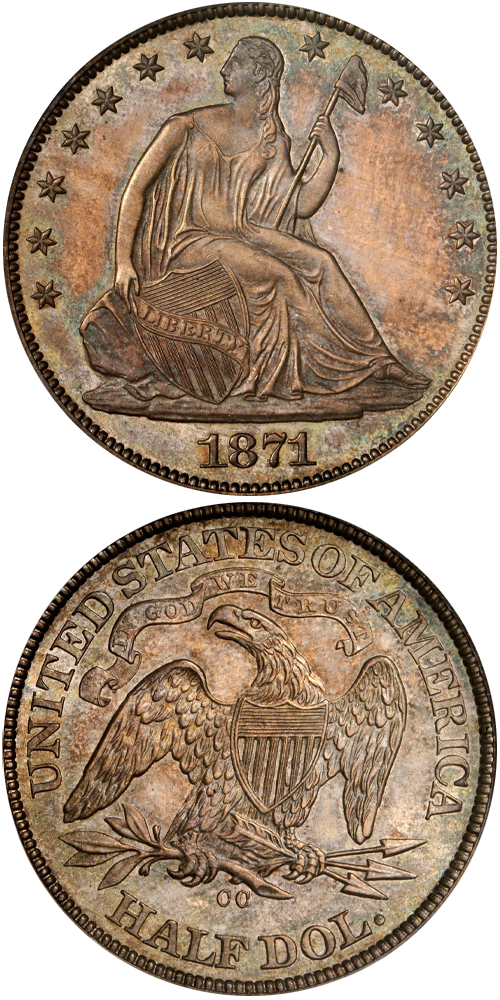1871-CC Liberty Seated Half Dollar
Jeff Ambio: The digits 71 in the date are lightly repunched. Scattered die polish lines within the recesses of the drapery below Liberty's right (facing) elbow also serve to identify this obverse die. The reverse die of the WB-3 pairing exhibits die cracks through the letters MER in AMERICA and through the two upper arrow heads to the final letter A in the same word. These cracks are present even on early die state coins.
Rusty Goe: A quick glance at the mintage figures for 1871 reveals that the half dollar was the primary silver coin denomination of choice for payouts to depositors. When compared to the production of the other three silver denominations in 1871 and that of the three gold denominations, the half dollar harvest practically doubled the combined mintages of the former six categories.
Determining accurate production numbers for Carson City coins made in 1871 and 1872 has proven to be a brain-teasing exercise over the past four decades. Beginning in the 1970s, researchers started to discover documents linked to the Carson Mint at the National Archives that contradicted some of the Treasury Department's figures for coinage turnout. Additionally, in browsing through hundreds of Nevada newspapers from the early 1870s I have found press releases from the Carson Mint that provided coinage output figures that further tangled the web of confusion.
For the 1871-CC half dollar, official Bureau of the Mint records show that 139,950 pieces were struck. More recent sources claim that the correct number is 153,950, or 14,000 additional coins. We see the opposite scenario when we examine production totals for the 1872-CC half dollar. The Bureau of the Mint reports 272,000 half dollars, while modern references say only 257,000 were made, or 15,000 fewer pieces. When we combine the quantities for both years, we see that the Bureau of the Mint reports a total of 411,950, while modern sources come in at 1,000 pieces less at 410,950.
Q. David Bowers: The second half dollar in the Carson City line up is the 1871-CC with a generous mintage handily eclipsing the production of the dime, quarter, and dollar of that year, and having a higher face value than all of these combined. Rusty Goe estimates that today 200 to 300 survive in all grades, but only five to seven of these qualify as Mint State and a scant 30 to 40 in grades from EF to AU. Considering the popularity of Carson City coins these figures qualify the 1871-CC as a scarcity, if not a rarity in all grades, and certainly a significant rarity in Mint State.
Wiley and Bugert describe seven different die combinations resulting from three obverse and five reverse dies.
The example to the left was sold by Stack's Bowers Galleries in the August 2012 Battle Born Collection of Carson City Coinage, where it realized $82,250.






